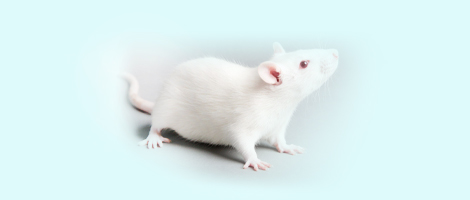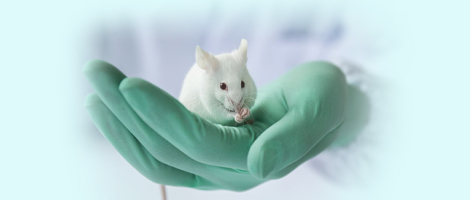| 1 |
Thessaloniki ESHRE/ASRM-Sponsored PCOS Consensus Workshop Group. Consensus on infertility treatment related to polycystic ovary syndrome[J]. Fertil Steril, 2008, 89(3):505-522. DOI:10.1016/j.fertnstert.2007.09.041 .
|
| 2 |
TEEDE H J, TAY C T, LAVEN J J E, et al. Recommendations from the 2023 international evidence-based guideline for the assessment and management of polycystic ovary syndrome[J]. J Clin Endocrinol Metab, 2023, 108(10):2447-2469. DOI:10.1210/clinem/dgad463 .
|
| 3 |
HOEGER K M, DOKRAS A, PILTONEN T. Update on PCOS: consequences, challenges, and guiding treatment[J]. J Clin Endocrinol Metab, 2021, 106(3): e1071-e1083. DOI:10.1210/clinem/dgaa839 .
|
| 4 |
KAUFFMAN A S, THACKRAY V G, RYAN G E, et al. A novel letrozole model recapitulates both the reproductive and metabolic phenotypes of polycystic ovary syndrome in female mice[J]. Biol Reprod, 2015, 93(3):69. DOI:10.1095/biolreprod.115.131631 .
|
| 5 |
BEGUM N, MANIPRIYA K, VEERESH B. Role of high-fat diet on letrozole-induced polycystic ovarian syndrome in rats[J]. Eur J Pharmacol, 2022, 917:174746. DOI:10.1016/j.ejphar. 2022. 174746 .
|
| 6 |
VASSILATOU E, VASSILIADI D A, SALAMBASIS K, et al. Increased prevalence of polycystic ovary syndrome in premenopausal women with nonalcoholic fatty liver disease[J]. Eur J Endocrinol, 2015, 173(6):739-747. DOI:10.1530/EJE-15-0567 .
|
| 7 |
PASCHOU S A, POLYZOS S A, ANAGNOSTIS P, et al. Nonalcoholic fatty liver disease in women with polycystic ovary syndrome[J]. Endocrine, 2020, 67(1):1-8. DOI:10.1007/s12020-019-02085-7 .
|
| 8 |
GIANNOULI A, STEFANAKI C, KOUSKOUTIS C, et al. Hepatokine profile in adolescents with polycystic ovary syndrome: a case-control study[J]. J Clin Med, 2023, 12(17):5744. DOI:10.3390/jcm12175744 .
|
| 9 |
LIU S, HU W J, HE Y R, et al. Serum Fetuin-a levels are increased and associated with insulin resistance in women with polycystic ovary syndrome[J]. BMC Endocr Disord, 2020, 20(1):67. DOI:10.1186/s12902-020-0538-1 .
|
| 10 |
BEDNARSKA S, FRYCZAK J, SIEJKA A. Serum β-Klotho concentrations are increased in women with polycystic ovary syndrome[J]. Cytokine, 2020, 134:155188. DOI:10.1016/j.cyto. 2020.155188 .
|
| 11 |
SHAH M Z UL HAQ, SHRIVASTAVA V K, MIR M A, et al. Role of diacerein on steroidogenesis and folliculogenesis related genes in ovary of letrozole-induced PCOS mice[J]. Chem Biol Interact, 2023, 377:110468. DOI:10.1016/j.cbi.2023.110468 .
|
| 12 |
VIRTANEN N, SAARELA U, KARPALE M, et al. Roxadustat alleviates metabolic traits in letrozole-induced PCOS mice[J]. Biochem Pharmacol, 2024, 229:116522. DOI:10.1016/j.bcp. 2024.116522 .
|
| 13 |
TREFTS E, GANNON M, WASSERMAN D H. The liver[J]. Curr Biol, 2017, 27(21): R1147-R1151. DOI:10.1016/j.cub.2017.09.019 .
|
| 14 |
LIU D, GAO X, PAN X F, et al. The hepato-ovarian axis: genetic evidence for a causal association between non-alcoholic fatty liver disease and polycystic ovary syndrome[J]. BMC Med, 2023, 21(1):62. DOI:10.1186/s12916-023-02775-0 .
|
| 15 |
WU Y X, YANG X Y, HAN B S, et al. Naringenin regulates gut microbiota and SIRT1/PGC-1ɑ signaling pathway in rats with letrozole-induced polycystic ovary syndrome[J]. Biomed Pharmacother, 2022, 153:113286. DOI:10.1016/j.biopha.2022. 113286 .
|
| 16 |
PIECZYŃSKA J M, PRUSZYŃSKA-OSZMAŁEK E, KOŁODZIEJSKI P A, et al. The role of a high-fat, high-fructose diet on letrozole-induced polycystic ovarian syndrome in prepubertal mice[J]. Nutrients, 2022, 14(12):2478. DOI:10.3390/nu14122478 .
|
| 17 |
RYU K J, PARK H, HAN Y I, et al. Effects of time-restricted feeding on letrozole-induced mouse model of polycystic ovary syndrome[J]. Sci Rep, 2023, 13(1):1943. DOI:10.1038/s41598-023-28260-5 .
|
| 18 |
LI Z, LIU Y, WANG Y, et al. Sodium oligomannate's amelioration of reproductive and metabolic phenotypes in a letrozole-induced PCOS-like mouse model depends on the gut microbiome[J]. Biol Reprod, 2024, 111(2):361-375. DOI:10.1093/biolre/ioae058 .
|
| 19 |
BANASZEWSKA B, DULEBA A J, SPACZYNSKI R Z, et al. Lipids in polycystic ovary syndrome: role of hyperinsulinemia and effects of metformin[J]. Am J Obstet Gynecol, 2006, 194(5):1266-1272. DOI:10.1016/j.ajog.2005.11.009 .
|
| 20 |
SALILEW-WONDIM D, WANG Q, TESFAYE D, et al. Polycystic ovarian syndrome is accompanied by repression of gene signatures associated with biosynthesis and metabolism of steroids, cholesterol and lipids[J]. J Ovarian Res, 2015, 8:24. DOI:10.1186/s13048-015-0151-5 .
|
| 21 |
LI H, YU X H, OU X, et al. Hepatic cholesterol transport and its role in non-alcoholic fatty liver disease and atherosclerosis[J]. Prog Lipid Res, 2021, 83:101109. DOI:10.1016/j.plipres. 2021.101109 .
|
| 22 |
TAKEI A, NAGASHIMA S, TAKEI S, et al. Myeloid HMG-CoA reductase determines adipose tissue inflammation, insulin resistance, and hepatic steatosis in diet-induced obese mice[J]. Diabetes, 2020, 69(2):158-164. DOI:10.2337/db19-0076 .
|
| 23 |
SIDDIQUI S, MATEEN S, AHMAD R, et al. A brief insight into the etiology, genetics, and immunology of polycystic ovarian syndrome (PCOS)[J]. J Assist Reprod Genet, 2022, 39(11):2439-2473. DOI:10.1007/s10815-022-02625-7 .
|
| 24 |
JOHNSON D E, O'KEEFE R A, GRANDIS J R. Targeting the IL-6/JAK/STAT3 signalling axis in cancer[J]. Nat Rev Clin Oncol, 2018, 15(4):234-248. DOI:10.1038/nrclinonc.2018.8 .
|
| 25 |
ASHOUR D, REBS S, ARAMPATZI P, et al. An interferon gamma response signature links myocardial aging and immunosenescence[J]. Cardiovasc Res, 2023, 119(14):2458-2468. DOI:10.1093/cvr/cvad068 .
|
| 26 |
ESCOBAR-MORREALE H F, LUQUE-RAMÍREZ M, GONZÁLEZ F. Circulating inflammatory markers in polycystic ovary syndrome: a systematic review and metaanalysis[J]. Fertil Steril, 2011, 95(3):1048-1058.e1-2. DOI:10.1016/j.fertnstert. 2010.11.036 .
|
| 27 |
PHELAN N, O'CONNOR A, KYAW TUN T, et al. Leucocytosis in women with polycystic ovary syndrome (PCOS) is incompletely explained by obesity and insulin resistance[J]. Clin Endocrinol, 2013, 78(1):107-113. DOI:10.1111/j.1365-2265. 2012.04454.x .
|
| 28 |
EHSES J A, BÖNI-SCHNETZLER M, FAULENBACH M, et al. Macrophages, cytokines and beta-cell death in Type 2 diabetes[J]. Biochem Soc Trans, 2008, 36(Pt 3):340-342. DOI:10.1042/BST0360340 .
|
| 29 |
KRISHNAN A, MUTHUSAMI S, PERIYASAMY L, et al. Effect of DHT-induced hyperandrogenism on the pro-inflammatory cytokines in a rat model of polycystic ovary morphology[J]. Medicina, 2020, 56(3):100. DOI:10.3390/medicina56030100 .
|







 )(
)( )
)
 )(
)( )
)